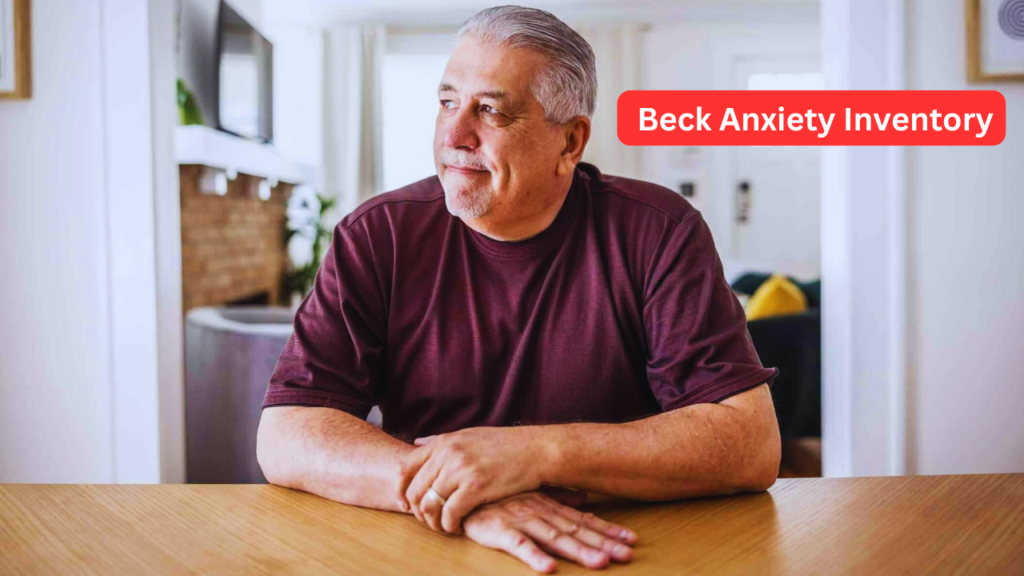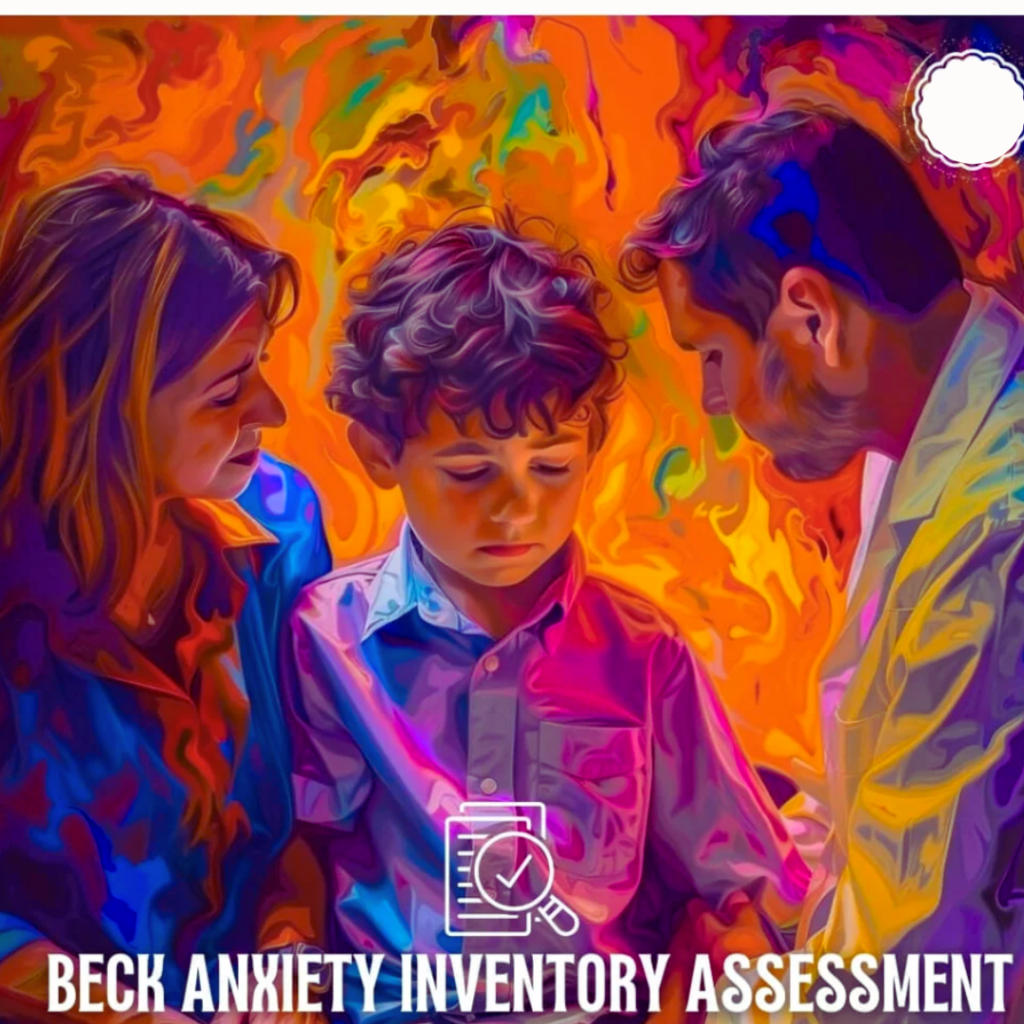
Anxiety is a feeling of uneasiness, fear, or worry. While everyone experiences anxiety at times, some people deal with it more frequently and may also have physical signs. The Beck Anxiety Inventory (BAI) is a questionnaire designed to assess the severity of a person’s anxiety symptoms.
The BAI is often used in clinical and research settings, but individuals can also use it to determine if they should seek treatment for their psychological signs. It consists of twenty-one questions that can be completed independently or with the help of a healthcare provider.
In this article, I will discuss what the BAI measures, how reliable it is, and how it can assist healthcare professionals.
Development of the Beck Anxiety Inventory

In 1988, the Beck Anxiety Inventory (BAI) was created by Dr. Aaron Beck and his colleagues. Dr. Beck, a well-respected psychiatrist, was deeply involved in research on mental health, particularly in areas like anxiety, depression, and other psychological disorders.
This inventory was specifically designed to measure anxiety levels while avoiding any overlapping with symptoms of depression or other mental health conditions. Since anxiety and depression often occur together, earlier tools struggled to separate the two. The BAI, however, was built to focus solely on anxiety.
Over the years, research has consistently shown its effectiveness, with studies supporting its accuracy for more than three decades. Before the development of BAI, anxiety assessments such as the State-Trait Anxiety Inventory included symptoms that could also be linked to depression, making their results less reliable. This ensures that a high score on the BAI truly reflects anxiety rather than another condition.
How Does the Beck Anxiety Inventory Measure Anxiety Symptoms?
The Beck Anxiety Inventory (BAI) measures the intensity of various anxiety symptoms over a 1-week time span. It primarily assesses physical symptoms and is meant to capture short-term anxiety signs. The inventory consists of 21 questions, each reflecting different psychological and physical signs of anxiety.
Most of the questions focus on bodily symptoms instead of cognitive symptoms. Because of this, clinicians generally use the Beck Anxiety Inventory alongside the Penn State Worry Questionnaire. The latter is considered a better tool for measuring cognitive signs, like excessive worrying or catastrophic thinking.
Below are the 21 symptoms included in the Beck Anxiety Inventory:
- Weak or unsteady legs
- Tingling or numbness
- Fear that something terrible will happen
- Feeling overheated
- Fast or pounding heartbeat
- Intense fear or terror
- Trouble relaxing
- Feeling lightheaded or dizzy
- Shaking hands
- Feeling nervous
- General shakiness
- Feeling scared
- Sweating, either hot or cold
- Fear of dying
- Sensation of choking
- Feeling unsteady
- Fear of losing control
- Upset stomach or indigestion
- Flushed face
- Difficulty breathing
- Feeling faint
Every one of the 21 questions in the Beck Anxiety Inventory has the same four answer choices. Each response is scored on a scale from 0 to 3, with a maximum total score of 63. The final score falls into different categories based on severity.
- 0 to 7 – Minimal anxiety
- 8 to 15 – Mild anxiety
- 16 to 25 – Moderate anxiety
- 26 to 63 – Severe anxiety
How Can Doctors Use the Beck Anxiety Inventory?

The Beck Anxiety Inventory is not meant to be used as the only tool for diagnosing anxiety. Instead, it helps assess the presence and severity of anxiety symptoms in a person. This makes it useful for every psychiatric patient, not just patients specifically looking for anxiety treatment.
With this information, a healthcare provider can create a treatment plan based on the patient’s symptoms. The BAI can also be used in follow-up appointments to track progress. If symptoms do not improve, the provider may adjust the treatment plan as needed.
For primary care doctors, this inventory can serve as a useful starting point when evaluating anxiety, particularly for individuals with known conditions like social phobia, panic disorder, or generalized anxiety disorder. If you’re receiving ongoing mental health care, doctors can use BAI multiple times to monitor changes in your symptoms over time.
Accuracy of the BAI
Not long after its release, several studies were conducted to test the accuracy of the Beck Anxiety Inventory, mainly in patients already diagnosed with anxiety disorders. In 1991, one notable study compared the Beck Anxiety Inventory to the Hamilton Anxiety Rating Scale, which was widely used at the time.
The results showed a moderate to high correlation between BAI scores and those of the Hamilton Anxiety Rating Scale, supporting its effectiveness in measuring anxiety symptoms.
The study also found that people with panic-related disorders tended to score higher on the BAI than those with generalized anxiety disorder.
In 1993, another study concluded that the BAI was a reliable tool for assessing anxiety in psychiatric outpatients without mistakenly measuring signs of other mental health conditions.
Limitations of This Inventory
The Beck Anxiety Inventory (BAI) is effective at distinguishing between individuals with and without anxiety disorders. Research has shown that it provides reliable and consistent results, with each question contributing equally to measuring anxiety. The BAI has also demonstrated strong test-retest reliability over short periods.
However, the BAI is not designed to diagnose specific anxiety disorders or other mental health conditions. Some of its questions focus on specific physical signs, such as tingling, numbness, and a rapid heartbeat, symptoms that can also occur due to medical conditions unrelated to anxiety.
As a result, it may not always capture anxiety in individuals who experience fewer physical symptoms. Mental health professionals typically use multiple assessment tools to gain a full understanding of a person’s mental health.
While the BAI was designed to measure anxiety separately from depression, some overlap remains, particularly with depressive symptoms, which could affect the clarity of results.
Getting Professional Help for Anxiety

If you are experiencing symptoms of clinical anxiety, particularly if your BAI results show moderate to severe levels, it might be a good idea to seek professional support. A therapist can assess your condition and recommend treatment options. Cognitive behavioral therapy, in particular, can help you recognize negative thought patterns that contribute to anxiety and teach you effective coping strategies to manage distress.
Final Thoughts
Feeling anxious is a normal part of life, but when anxiety starts to affect your daily well-being, it could be a sign of an anxiety disorder. The Beck Anxiety Inventory is a tool designed to help measure the severity of your anxiety symptoms. For more than 30 years, professionals have used the BAI to identify individuals with anxiety conditions from those without.
While it is a reliable tool, it is not meant to diagnose specific conditions and might not be equally accurate for everyone. If you’re concerned about your results, a mental health professional can help interpret them and guide you toward the right treatment options if necessary.
